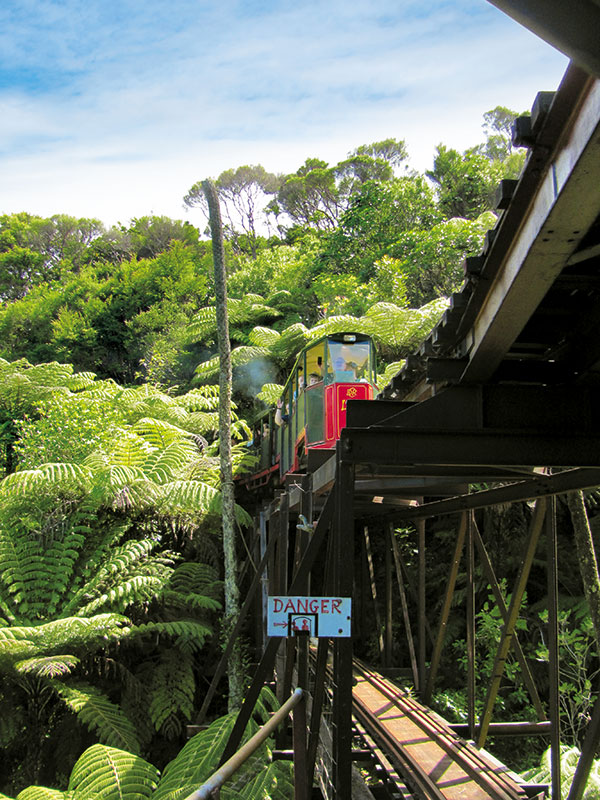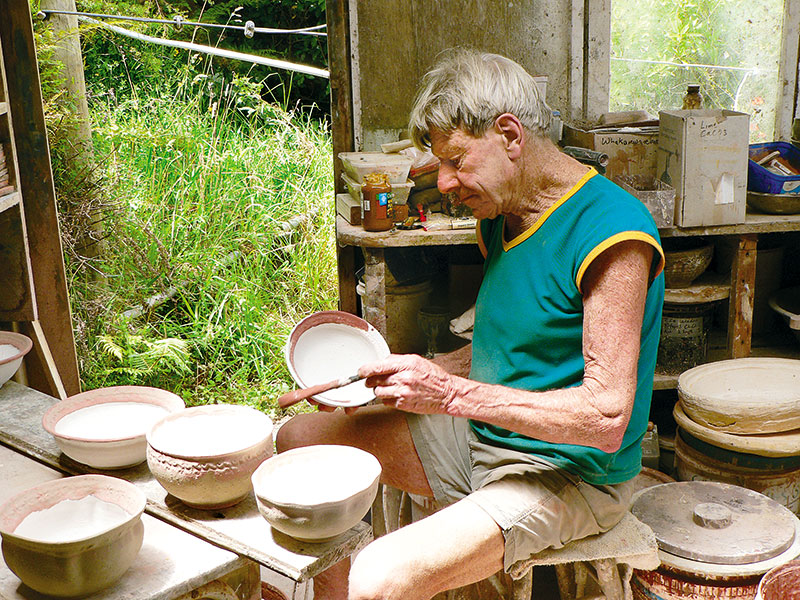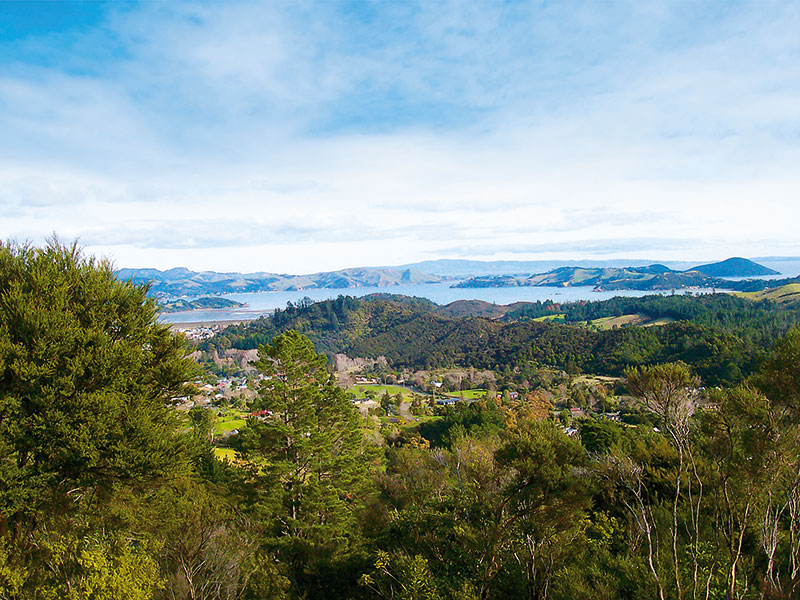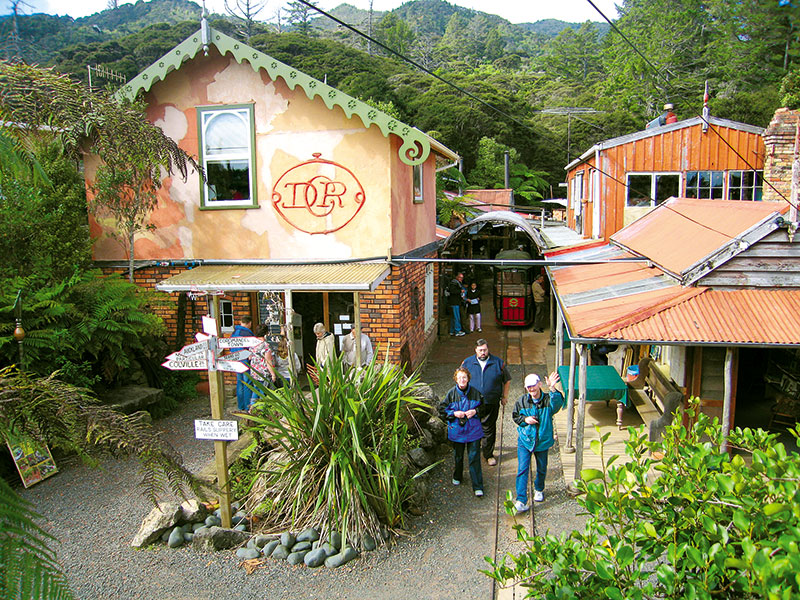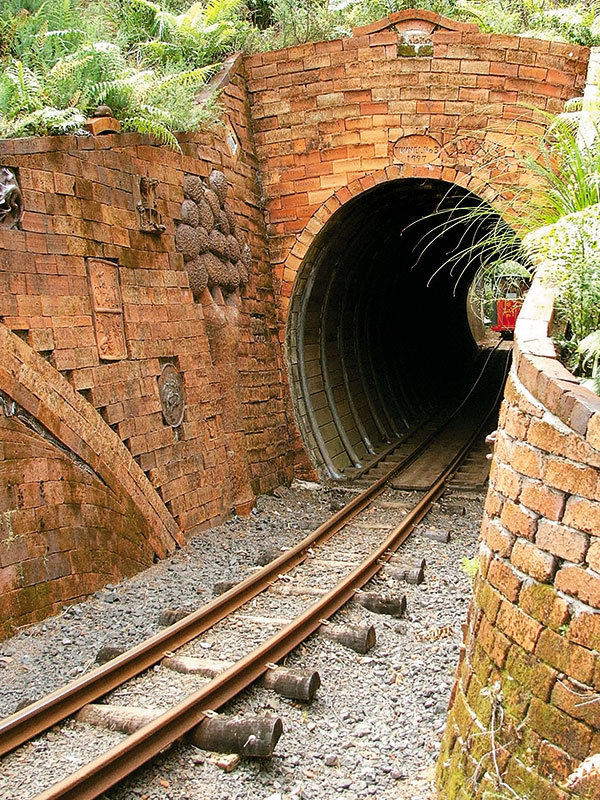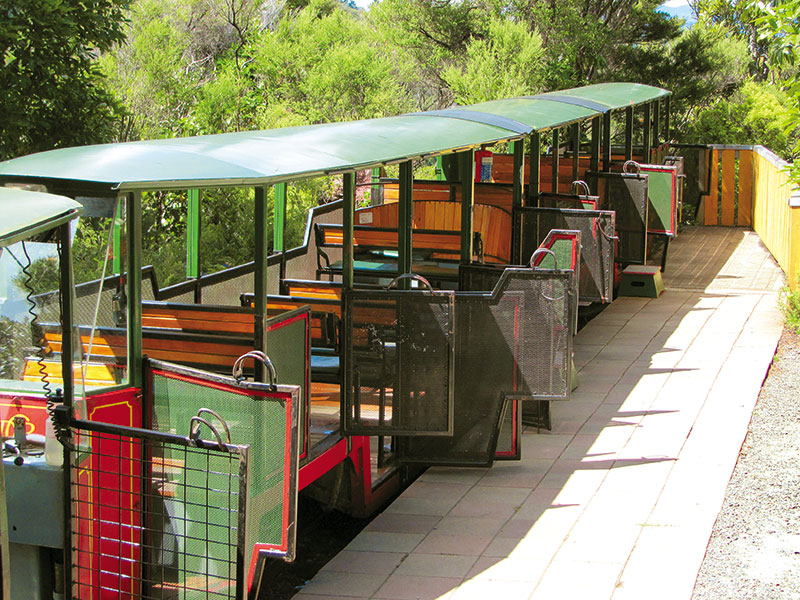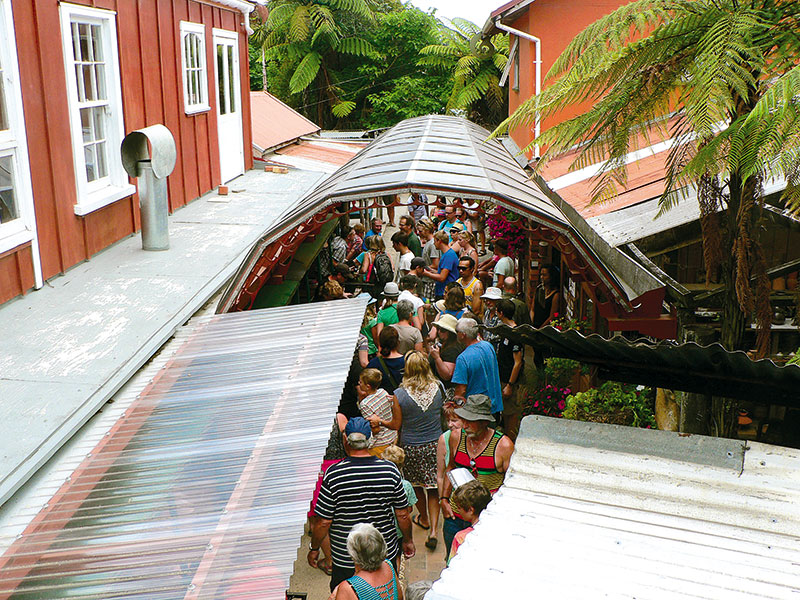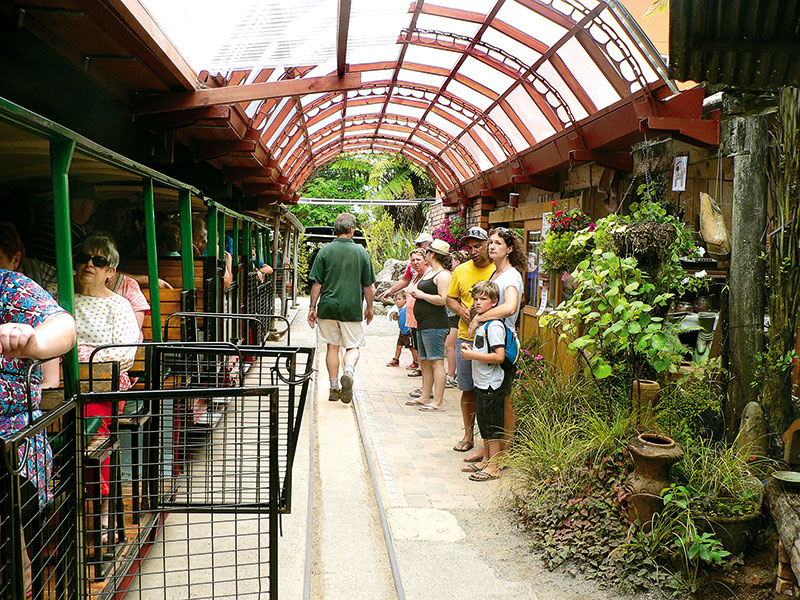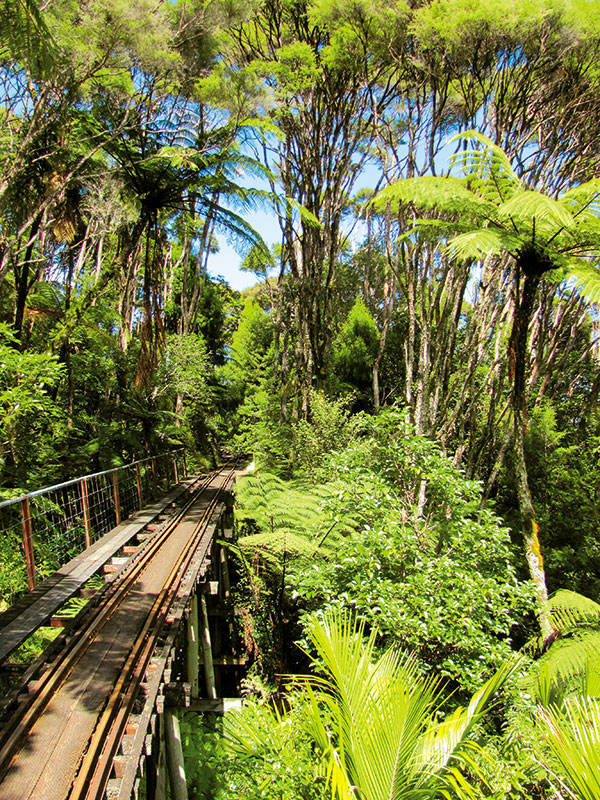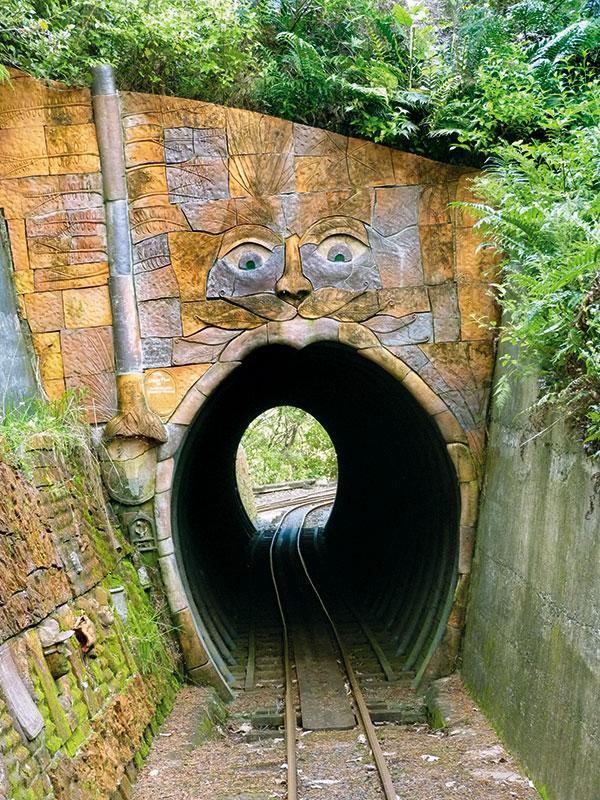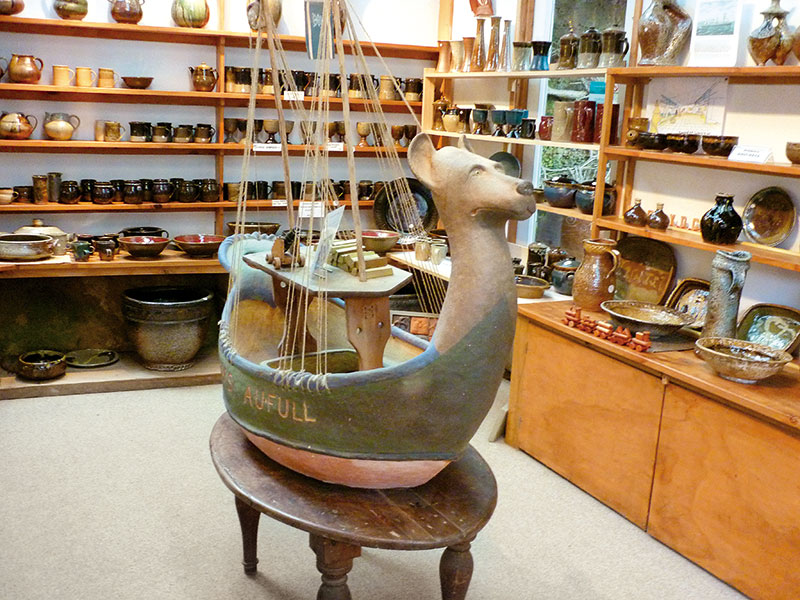It is impossible to visit Driving Creek Railway without wanting to understand the marvellous mind of the man who, for the large part, designed and built this wonder.
I mean what kind of person imagines building a narrow gauge railway – complete with spirals and viaducts – to wind steeply upwards through dense, regenerating bush?
And even if a person was capable of imagining such a man-made wonder, who among us would have the skill and tenacity to build it – let alone to also design and construct the miniature trains to ply the miniature tracks?
Enter Barry Brickell, OBE, whose youthful passion for fire and clay led to the construction of Driving Creek Railway, pottery and wildlife sanctuary, now one of New Zealand's most popular tourist attractions.
Barry Brickell
Barry was born in 1935. He is reputed to have built his first kiln at the family home in Devonport while still in primary school. During his third year at Takapuna Grammar he met the potter Len Castle who would later mentor Barry and introduce him as an emerging artist to the fledgling Auckland art scene.
Here he was surrounded by others – like Hamish Keith and Colin McCahon – who would go on to become household names.
Emerging from Auckland University in 1960 with a Bachelor of Science degree, Barry took a short-lived teaching position in the Coromandel, before purchasing his first piece of land to establish a pottery. He would eventually buy the land next door, and it is on this extended parcel of 22ha, that he built the pottery and railway.
Barry did not set out to build a tourist attraction. The railway was established over a 25-year period from 1975, initially to bring the raw materials – wood and clay – from the steep hillsides to the pottery.
It was also intended to carry the equipment needed for his ambitious conservation project – replacing every felled pine tree with hundreds of native trees to recreate the diversity of the original forest.
It is said that decision to capitalise on the tourist potential of the railway was only made when the potter's bank manager gently reminded the artist that he still had a hefty mortgage to pay off.
With the mortgage long since paid, Barry has remained true to his original ambition to put conservation ahead of exploitation and the railway funds the environmental project.
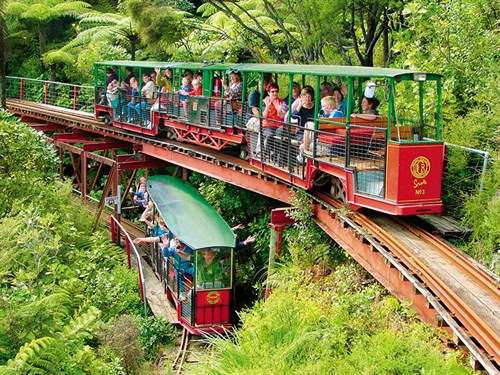
The little railway
The 381mm gauge railway comprises two spirals, three tunnels, five reversing points, 10 bridges and the feat of engineering that is the double decker viaduct. Inclines can be a steep as one in 14, although the average incline is one in 24.
All of the rolling stock was engineered on site at the railway's workshops. These include the diesel railcars Snake, Possum and Linx, as well as the locomotives Elephant and Dieselmouse, and the passenger carriage Vintage Train.
The one-hour return trip winds upwards through the lush forest, past artful sidings and tunnels featuring imaginative clay works by Barry and the numerous other artists who have worked at the pottery.
At each reversing point the driver leaps from the controls to manually change the points. Seats in some cars can also be reversed so that the passenger is always going forwards, even when the train is not.
The upwards journey terminates 165 metres above sea level, at the Eyefull Tower, a recently constructed tower and viewing platform based on the design of Auckland's iconic small light–house Bean Rock.
From here the views over the Coromandel Peninsula will take your breath away. And you will also be able to see the entire Driving Creek property, the whole of which is now protected for perpetuity under covenant.
Conservation
Barry set out to heal the land which had been destroyed by colonists as they grafted farmland from magnificent kauri forest. On the land cleared by burning, wilding pines proliferated where kauri once stood. The invasive trees have now been almost entirely removed – the timbers milled on site and made into outdoor furniture and kiln wood.
In 1999 The Driving Creek Wildlife Sanctuary was formed. The predator proof fence was competed in 2008, and now more than 10 native bird species, four reptiles and several different fish thrive in the protected habitat. This will eventually be home to a conservation learning centre.
As Barry reaches the end of his life, his sustainable vision for a life filled with art and passion has been magnificently achieved. Driving Creek Railway and Sanctuary is the living legacy.
For the latest reviews, subscribe to Motorhomes, Caravans & Destinations magazine here.

